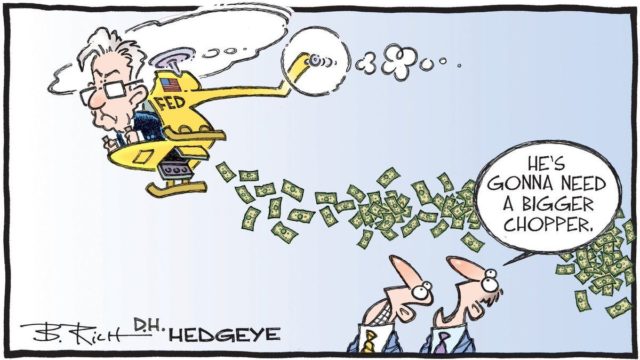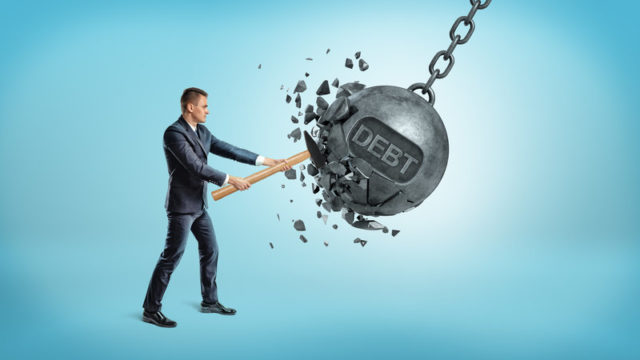This week, we’re all about Government Sponsored Bubbles. Socialism for the rich. The killer of capitalism. Whatever you want to call it. |
|---|
Click here if these just look like random letters to you! VALUATIONS MATTER: Top 4 US equity market valuation indicators, updated weekly with commentary. In a nutshell, here is how US markets have worked since the Great Recession:
Now, US equity markets are the second most expensive in history. Given the ongoing recession, extremely high stock market valuations, and massive on-going money printing, we start to look more towards hard assets like like gold, silver, oil (and other commodities), and real estate. Nowadays, some also look at bitcoin or other cryptocurrencies as being similar to gold. Here at Return On Time, we’ll let the bulls and bears hash it out while we invest in probabilities. At this point, it is possible that stock prices will remain elevated for years to come or that we could see another big crash anytime.
Diversifying with hard assets: Given all the distortions, we view diversification as critical to success in the 2020s because the probabilities for various outcomes are significant. Hard assets are a good way to counter massive money printing which ultimately leads to some kind of negative outcome like currency devaluation or significant inflation.
Hard assets to consider:
BOTTOM LINE: Investing in the 2020s is going to be a complex game. We’re in the middle of a government sponsored bubble created by 0% interest rates, massive money printing, and various cause-and-effect distortions in the economy. However, bubbles can often go on for much longer than we’d expect. Thus, to be a disciplined investor, it’s important to consider a wide range of probabilities and outcomes. Hard assets can be a valuable addition to a diversified portfolio as a hedge against currency devaluation and continued money printing. |
|---|
Printing money has an eventual consequence: The US is the most powerful nation in the world and the USD is the most powerful currency in the world today. Thus, we’ve been able to print money endlessly recently with minimal short term consequences. However, our national debt is fast approaching $27T and most of the recent federal debt has been printed out of thin air by the Federal Reserve. So, the Federal Reserve adds a few numbers in their computer system and then buys Treasuries of various duration to finance the government. This is likely to continue for some time.
The money supply (as measured by M2) has increased massively since March 2020. The money supply has grown by 20% in just a few months (or basically by the most ever in recorded US history). Without a doubt, every dollar we own today is less valuable than it was just a few short months ago. If the crisis gets worse, we may see the money supply contract temporarily but rest assured, the Federal Reserve is ready to print some more.
How do we actually pay it back? We have some historical context for this. During and after WW2, the Federal Reserve had similarly printed vast quantities of money and spent the next few years inflating the debt away via a practice known as Yield Curve Control (YCC). Put simply, yield curve control aims to artificially control interest rates (lower) for government debt. By buying more debt with printed money, the Federal Reserve can forcibly keep interest rates lower than real interest rates. A negative real interest rate means that inflation is higher than interest rates. Eventually, part of the goal is that inflation will increase in a controllable manner. For context, by 1947, inflation was over 17% in just one year. Yield Curve Control is a likely reality as the Federal Reserve is actively discussing this and arguably already informally engaging in YCC. Negative real rates inflate debt away.
Then what? The government will still have a massive debt problem after everything is said and done. Most likely, we’ll see tax rates increase sometime in the 2020s to bring some level of control to the federal debt. Keep in mind that tax rate increases are likely to have an outsized impact on corporations and that may affect the stock market as well.
BOTTOM LINE: Ultimately, we don’t really have a choice as a nation but to keep printing money and controlling interest rates. The alternative options are much worse. The best option is to inflate away as much debt as possible over the course of times in a controlled manner. Given that, the US government will likely do whatever it takes to make this a reality. While these are extreme steps, we applaud the Federal Reserve for stepping up during the crisis and preventing tens of millions of Americans from economic ruin. However, it’s important to keep in mind that there is a price to pay for these measures in the future that may include growing wealth inequality further. |
|---|
This week, we’re talking about productive debt vs. unproductive debt. Debt is a confusing topic for most people. Some of us want to have no debt. Some of us are knee deep in debt. In reality, everyone should consider the difference between productive and unproductive debts. Productive debt can often be used towards achieving financial goals, while unproductive debts have their place too when carefully considered.
What is productive debt? Productive debt is debt used for purchasing assets that appreciate over time or debt used to increase your own productivity. For example, if you acquire real estate using debt, real estate prices typically increase over time and thus it is a good debt that helps you build additional wealth. As another example, if you obtain a medical degree, you can increase your own productivity and potential income. Productive debt ultimately increases your net worth when used correctly.
What is unproductive debt? Unproductive debt is often used for purchasing possessions like cars, furniture, or other goods. In some cases, getting a degree with significant debt can also be considered unproductive debt unless your income potential can realistically pay off a student loan. The worst kind of debt is credit card debt because of the ultra high interest rates.
To clarify, it’s normal to have a blend of productive and unproductive debt.
Unproductive debt should be considered carefully and paid back relatively quickly. While a 72 month loan can be enticing to some car buyers, they lead buyers to purchase more expensive cars than they normally would. Given that cars are depreciating assets, the car may become worth less than the loan value in some cases. In the case of credit card debt, interest rates are sky high and are nearly impossible to pay back if you don’t pay beyond the minimum payment. The general problem with unproductive debt is that people often over extend themselves financially to afford something they really want today. Unproductive debt ultimately borrows from your future finances.
Productive debt is a great tool to increase your net worth. For example, just because you can buy a business or house in cash doesn’t mean you should. With interest rates as low as they are, you can keep some of the cash as an emergency savings fund or deploy it into various investments (depending on your comfort levels).
Words of caution. Taking on too much debt, whether unproductive or productive debt, easily flips a good situation upside down if anything bad happens to your finances. The current recession is a great example as tens of millions of Americans have lost jobs and many are now in dire financial circumstances. Before taking on any debt, carefully consider the impacts of that debt on your personal financial picture, don’t just assume the best case scenario is the only scenario.
BOTTOM LINE: Debt is a great tool to grow one’s net worth but it can also lead to financial ruin. It is important to understand the difference between productive and unproductive debt as well as understand what one can truly afford. |
|---|
Don’t just check your FICO® Score, Boost it instantly for Free For the first time ever and only with Experian, you can increase your credit scores fast by using your own positive payment history. Experian Boost is completely free, no credit card required! It can also help those with poor or limited credit situations. Other services such as credit repair may cost you up to thousands and only help remove inaccuracies from your credit report. Results may vary, see Experian.com for details |
|---|
Thank you for reading and watching Founder Talk the last 2 weeks. We’ve decided to retire this section so we can stay laser focused on providing you valuable investing, economic, and personal finance insights. |
|---|
Every week, we’ll point out a few of our favorite resources/articles/news that actually provide value.
According to data from E Trade, over half of Millennial and Gen Z investors are willing to stomach far more risk than they have in the past.
At the end of July, the Federal Reserve lowered their estimates for economic growth over the second half of the year.
CNN’s Fear and Greed Index is a great way to track investor sentiment in the market at any given point in time. Investors are feeling greedy as of August 25th 2020.
Harvard Business Review provides an interesting perspective for why stock buybacks are dangerous for the economy. We agree with their assessment.
If you have 30 minutes and want to learn more about the economy, Ray Dalio published a great YouTube video in 2013 on How The Economic Machine Works. |
|---|
What did you think of our newsletter? Let us know, your feedback will help us improve the quality of our newsletter. 1 2 3 4 5 6 7 8 9 10 Certified 20 Have more to say? Want us to cover something specific? We’d love to hear from you. |
|---|
The best way to let us know you enjoy Return On Time is to share us with your friends, family, and colleagues. Best of all, you get rewarded with free swag! |
|---|
|
|---|



 And just to be clear, we aren’t bears or bulls. We live in a world of probabilities, so we aim to invest in probabilities.
And just to be clear, we aren’t bears or bulls. We live in a world of probabilities, so we aim to invest in probabilities.


